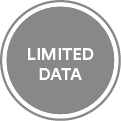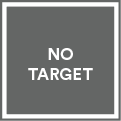- Puget Sound Indicator Name
- Infill development
- Progress Indicator
- Each Unit (number)
- /
-


- Topics
- Smart Growth
-
Laura Vary
- Contributing Partners
- Last Updated
- 05/15/2025 22:35:01
This indicator measures acres of new impervious surface area in residential zones per net new housing units built. Increasing housing units in areas with existing impervious surface, such as through new apartment buildings and other multi-unit housing, is an effective way to support population growth while protecting sensitive habitats. A lower value in this indicator suggests that more new housing was located in areas with existing impervious surfaces which can support the protection of sensitive habitats.
Accommodating growth in urban areas and promoting Smart Growth principles is a key strategy for the recovery of the Puget Sound ecosystem. Promoting infill development can help protect forest lands, open spaces, farms, and wetlands. Dense infill development, such as new apartment buildings and other multi-unit housing, is an effective way to support population growth while protecting sensitive habitats[i].
Jurisdictions are required under the Washington Growth Management Act to protect critical environmental areas and conserve natural resource areas like farms and forests[ii].
The 2022-2026 Action Agenda for Puget Sound and the related Land Development and Cover Implementation Strategy outline specific actions to protect natural areas and promote infill development.
- The Action Agenda’s Smart Growth strategy has high-level actions. These actions aim to balance the needs of the growing Puget Sound population with habitat restoration and protection of working lands.
- The Implementation Strategy provides more detail for how cities and counties can encourage sustainable development approaches while protecting important natural spaces.
This Progress Indicator is one way to assess progress promoting infill development.
[i]. Puget Sound Regional Council (2020). Infill Development, Housing Innovations Program, Puget Sound Regional Council. https://www.psrc.org/media/2038.
[ii]. Washington Administrative Code (2023). Minimum Guidelines to Classify Agriculture, Forest, Mineral Lands, and Critical Areas, title 365, chapter 190, section 020. WAC 365-190-020.
The following section describes observations of the baseline period. Due to data availability, we are not yet able to evaluate change over time and thus apply the “Limited Data” designation. As we collect more information on this indicator, we will update this report to characterize its trend.
Results were similar in most counties, with a few outliers.
- King county had the lowest value in this indicator (0.04 acres of new impervious surface area per new housing unit developed) of all counties, reflecting the well-documented ability of King county to implement dense infill housing development. This is especially true in the City of Seattle.
- San Juan county also had a low value in this indicator (0.06), however development here typically occurred in rural areas. More analysis is needed to understand this result as rural development is not, by definition, infill development.
- Skagit county had the highest value in this indicator (0.23) of all counties, likely reflecting significant non-residential impervious surface gain in Burlington, unincorporated UGAs, and rural areas.
- All other counties had indicator values between 0.09 and 0.16.
Jurisdictions vary widely, though larger cities tended to score lower than suburban and rural areas.
- Central Puget Sound cities like Seattle, Bellevue, Tacoma, Everett, Bremerton, and Bellingham all scored lower in this indicator. This reflects the fact that much new housing development in these cities was in the form of infill development to achieve a relatively high level of density.
- Monitoring Program
Small Area Estimates program, Office of Financial Management, State of Washington.
High Resolution Change Detection, Department of Fish and Wildlife, State of Washington.
- Data Source
Housing units estimates for 2011 and 2017, Washington Office of Financial Management’s Small Area Estimates program.
Impervious surface change polygons for 2011 and 2017, Washington Department of Fish and Wildlife’s High Resolution Change Detection program.
GIS data about general land use, including areas zoned to allow residential, 2012. Puget Sound Mapping Project.
Jurisdiction boundaries (cities, towns, urban growth areas, and counties), 2017. Washington Office of Financial Management.
This Progress Indicator relies on aerial imagery data from the Washington Department of Fish and Wildlife (WDFW) High Resolution Change Detection (HRCD) program to evaluate impervious surface area gains over time.
The indicator is calculated between 2011 and 2017. It is calculated by summarizing the total gain in impervious surface area in 2011 and 2017 in each jurisdiction and dividing that value by the estimated net new housing units for 2011 and 2017 in that jurisdiction. Due to data availability, results cannot be broken out by year from 2011 to 2017.
The indicator is calculated for every city, town, unincorporated UGAs, and rural areas. Results can be rolled up to the county or regional scale.
Baseline period: change between 2011 and 2017.
We do not currently have enough data to evaluate trends in this indicator. We thus apply the “No Trend” designation. As we collect more information on this indicator, we will compare new data to the baseline reporting period (2011-2017) and evaluate the trend of the indicator.
Limitations
This Progress Indicator helps assess progress minimizing new impervious surface areas with new housing development. But it has limitations:
The indicator is not a direct measure of infill development.
- Data is not readily available to assess the specific location of each newly constructed home and its proximity to established urban areas. Instead, this indicator serves as a proxy for infill development as we assume that infill development would result in less new impervious surface areas per new housing unit developed.
There is local variation in zoning practices that impacts the ability to identify areas that allow for residential growth.
- This indicator focuses only on residential and mixed-use development zones. Some jurisdictions have local zones that allow for either residential or other development (commercial, etc.). Jurisdictions thus vary in how much non-residential development is captured in this indicator.
- Counties also vary in how rural areas are zoned. In some counties, residential development is clearly allowed in some rural areas, whereas other rural zones appear to limit residential development. For rural areas only, this indicator considers all impervious surface change instead of focusing exclusively on rural residential zones.
Zoning classes used by this indicator represent a simplified picture of zoning practices.
- The Puget Sound Mapping Project (PSMP) developed a novel approach to review and standardize zoning classes across the Puget Sound in 2012.
- This indicator considers all development between 2011 and 2017. If a jurisdiction changes its zoning practices to allow residential growth in a new area, this indicator will not capture impervious surface area changes in that area.
- The PSMP dataset is currently being updated and when complete, new information can be integrated into this indicator.
Not all impervious surfaces have the same environmental impacts.
- This indicator does not track different types of impervious surfaces or account for impervious surfaces with stormwater retrofits.
The indicator does not specify where impervious surface gain is occurring in relation to key natural areas.
- This indicator should be evaluated alongside the Farmland Conversion, Forestland Conversion Progress Indicators (in development), and Habitat Function Vital Sign Indicators to better understand how land cover change is impacting the environment.
View a detailed report of the methods used to calculate this Progress Indicator here.
- Critical Definitions
Impervious surface area: the area of man-made structures (pavement, sidewalks, roofs, driveways, parking lots) that are covered by water-resistant materials like asphalt, concrete, brick, etc.[i]
Infill development: New construction built within established urban areas. In many cases, infill development is built in locations that are already impervious, such as through redevelopment of a strip mall or parking lot. Infill development typically results in much more limited expansion of impervious surface area because much of the necessary infrastructure (roads, parking lots, etc.) already exists nearby.
Urban Growth Area (UGA): Areas designated by counties within which urban growth shall be encouraged and outside of which growth can occur only if it is not urban in nature (RCW 36.70A.110).
There are several reasons for variation in the value of this indicator across counties and jurisdictions. The relative importance of these reasons varies across the region. Below are some observations that may help interpret results and identify questions worth additional research. Due to data availability, we are not yet able to evaluate change over time and thus apply the "Limited Data" designation. As we collect more information on this indicator, we will update this report to characterize its trend.
Cities with significant multi-unit housing production had less impervious surface gains per unit.
- Results in this indicator pair nicely with the Housing Diversity Indicator. Looking at both indicators reveals an important relationship between the two.
- For example, nearly all (92 percent) of Seattle’s net new housing from 2011-2016 were in multi-unit buildings; during the same time period, the city added only 0.01 acre of new impervious surface area per unit. Seattle likely accomplished this by encouraging redevelopment and infill development of urban areas.
- Some suburban areas like Redmond, Renton, and Federal Way also had a lot of multi-unit development and lower values for impervious surface gain per new housing unit.
The total amount of residential development impacts performance in this indicator.
- If a jurisdiction had very limited housing production from 2011 to 2017, a few large non-residential developments could dramatically affect the result. This was likely the case in Skagit county’s unincorporated UGA.
Data is not currently available to measure progress over time in this indicator. Trends over time in this indicator are essential to explore how different strategies, policies, and actions shape infill development and impervious surface area gain. This indicator will be updated as new data becomes available.
-
We currently lack available data to evaluate this indicator over time; this limits our ability to conceptualize specific reasons for trends over time. However, the Action Agenda describes several regional strategies to channel growth into UGAs and promote infill development. If implemented, local jurisdictions may improve their performance in this indicator.
For example, local jurisdictions can promote infill development by:
- Increasing density and flexibility by adjusting zoning and development rules in UGAs. These strategies can help reduce costs per unit and improve the financial feasibility of new development. See Guidance for Developing a Housing Action Plan from Washington State Department of Commerce for specific strategies and tools.
- Implementing a multi-family tax exemption (MFTE) program to incentivize new housing development in designated urban areas.
- Adopting new SEPA Infill Exemption for middle housing in cities and unincorporated UGAs.
- Encouraging accessory dwelling unit (ADU) production in cities and unincorporated UGAs.
No datasets uploaded.
- Reporting Instructions
No Subcategories for this Puget Sound Indicator.